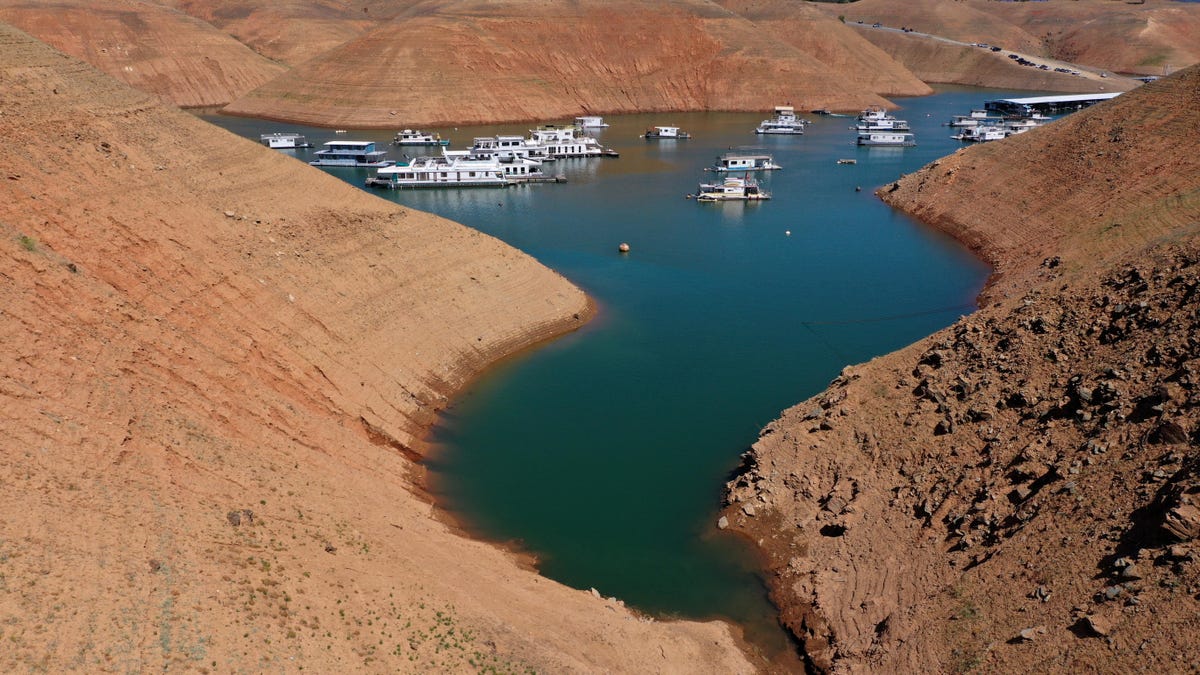Ca. Hydro Plant Expected to Shut Down as Heat Wave Drains Key Reservoir Leave a comment

The record heat wave searing the West Coast has drained one of California’s largest reservoirs so much that its hydroelectric power plant may be forced to shut down for the first time this summer, officials told CNN this week. This would be the first time the plant has shut off since it opened more than five decades ago.
The unrelenting heat and catastrophic drought conditions, both exacerbated by the climate crisis, have rapidly depleted the water supply at Northern California’s Lake Oroville and other reservoirs across the West. You can check out startling satellite imagery showing the megadrought’s scope here.
Due to the “alarming levels,” state officials will likely have to close the Edward Hyatt Power Plant for the first time since it opened in 1967, California Energy Commission spokesperson Lindsay Buckley told CNN.
Water from Lake Oroville, the state’s second-largest reservoir, generates enough electricity to power up to 800,000 homes when operating at full capacity, the outlet reports. In recent days, the reservoir’s water level has been hovering at around 700 feet (213 meters) above sea level, or about 35% capacity. If it continues to fall at its currently projected rate to 640 feet (195 meters), there will not be enough water to continue operating the Hyatt plant in two to three months.
“If lake levels fall below those elevations later this summer, [the California Department of Water Resources] will, for the first time, cease generation at the Hyatt power plant due to lack of sufficient water to turn the plant’s electrical generation turbines,” said Liza Whitmore, public information officer of DWR’s Oroville field division, in a statement to the outlet.
G/O Media may get a commission
A shutdown would further strain the state’s electric grid, which is already being pushed to its limits amid triple-digit temperatures. The situation has grown so dire that California Governor Gavin Newsom declared a statewide heatwave emergency on Thursday allowing companies to temporarily fire up backup generators without securing the usual legal permits. At the same time, California’s grid operator called for residents to conserve their energy use during peak demand hours to keep from overstressing the system, which could lead to blackouts.
According to the U.S. Drought Monitor, roughly 85% of the state, including where Lake Oroville is located, is experiencing an “extreme drought”—the second-highest category of drought conditions. This time last year, only 2.45% of California was in an “extreme drought.”
The extreme weather conditions pose “extreme peril” to the safety of residents and properties in California, according to the governor’s declaration. Wildfires along with “critical” and “extreme” fire warnings have already been spreading throughout the region. Most terrifying of all is the fact that summer doesn’t even officially start until tomorrow, so it’s only expected to get hotter from here.

